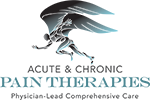Coming soon.
Pain Control & Surgery
Ready To Get Started? Call Us.
(425) 440-3351
Locations
Acute Pain Therapies & Ketamine Clinic in Seattle
13033 Bel-Red Rd. Suite 120
Bellevue, WA 98005
o. (425) 440-3351 | (425) 440-3439
Please note: Our Bellevue Ketamine Clinic has moved into our newly designed, expanded practice facility location at:
13033 BEL-RED RD., SUITE 210, BELLEVUE, WA 98005. Please make a note of it!
Pages
Posts
- Depression: When medication and treatment do not work September 8, 2023
- Depression and Relationships August 4, 2023
- Advancements in Arthritis Research July 7, 2023
© 2024 Acute & Chronic Pain Therapies. Privacy Policy.
Close Menu
- About
- Conditions
- Services
- SPRAVATO™
- Nerve Catheter Infusions
- Diagnostic Musculoskeletal Ultrasound
- Ketamine Infusions
- Nerve Cryotherapy
- PRP & Stem Cell Therapy
- Sedation
- Nerve Block Procedures
- Botox
- Epidural Steroid Injection
- Regenerative Medicine
- Interventional Psychiatry for Refractory Conditions
- Transcranial Magnetic Stimulation
- Providers
- Contact
- Resources
- (425) 440.3351
